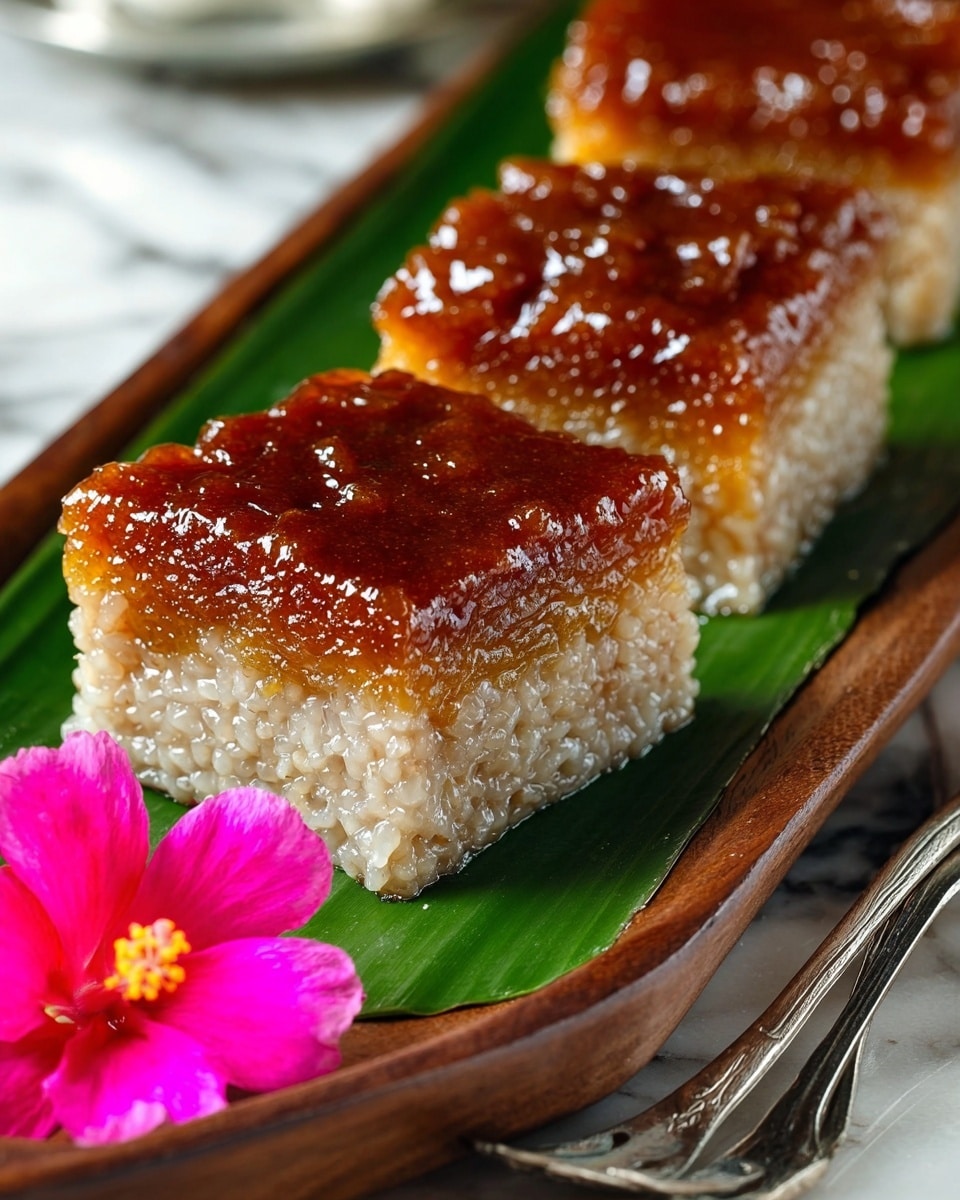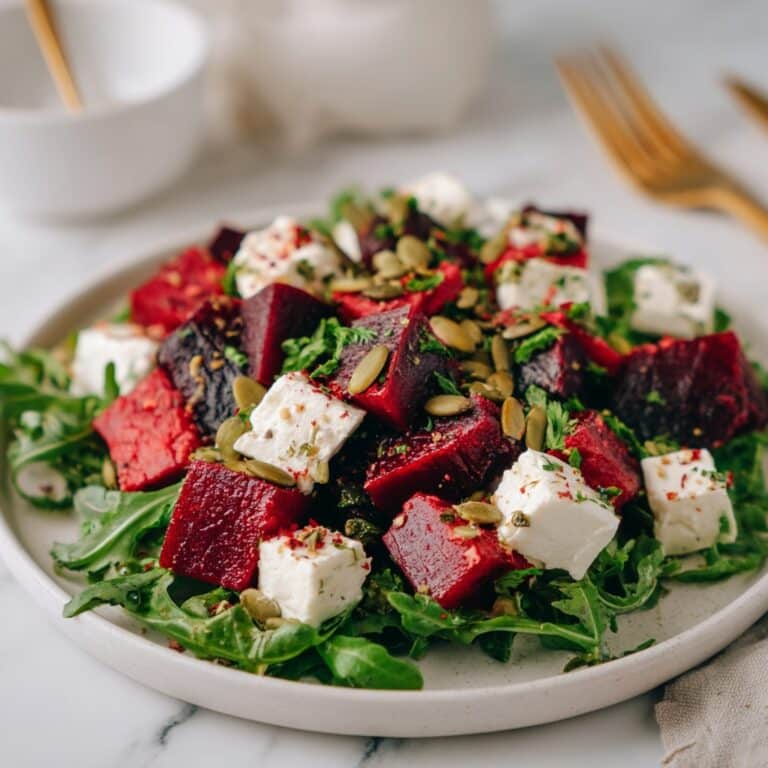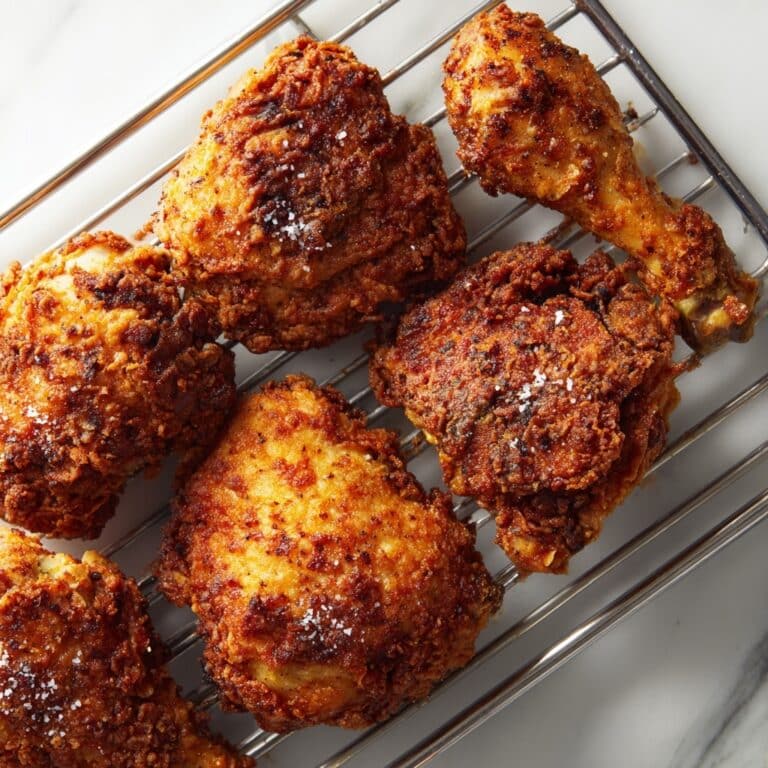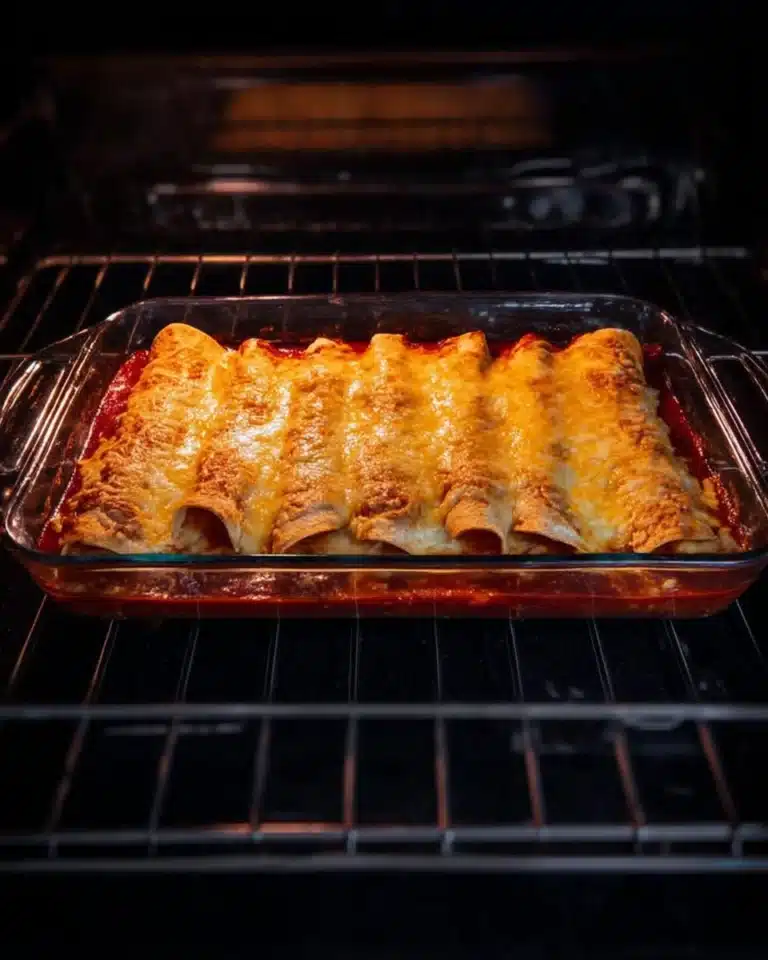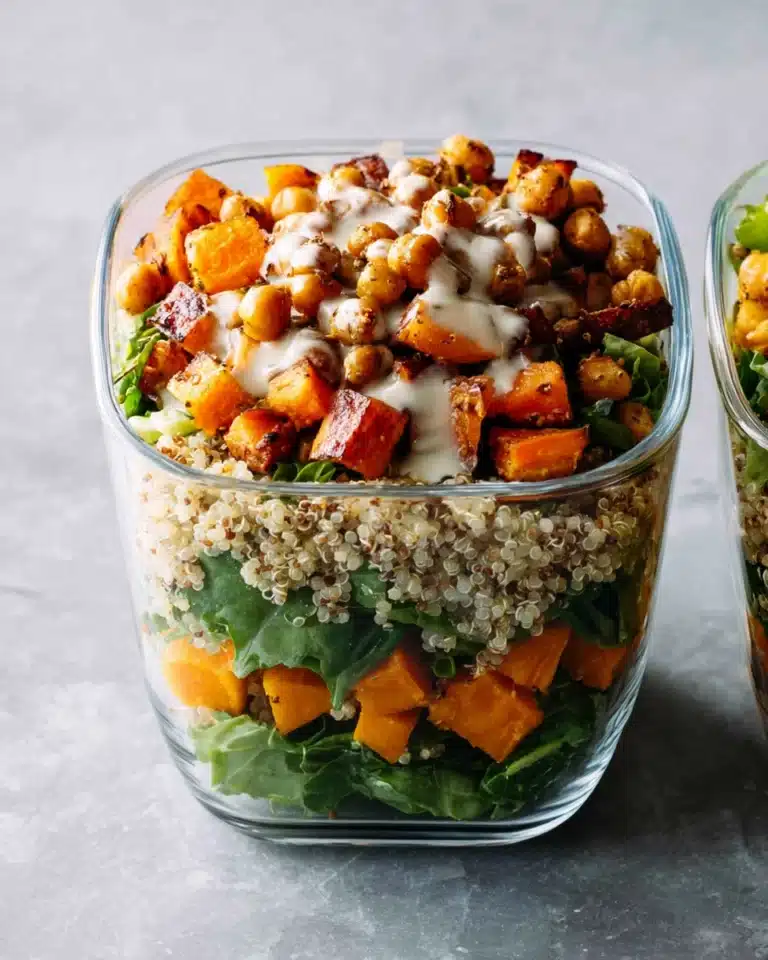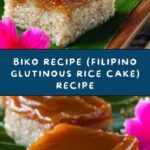If you have a sweet spot for warm, chewy, and comforting treats, this Biko Recipe (Filipino Glutinous Rice Cake) Recipe is the perfect dish to add to your repertoire. Biko, a traditional Filipino rice cake made from glutinous rice, coconut milk, and caramelized brown sugar, delivers a luscious blend of sticky texture and rich coconut flavor that feels like a warm hug with every bite. This dessert is not only beloved at Filipino celebrations but also a cozy everyday indulgence that will quickly become a personal favorite.
Ingredients You’ll Need
Creating this delightful Biko Recipe (Filipino Glutinous Rice Cake) Recipe is all about using simple, wholesome ingredients that come together to create a harmonious melody of flavor and texture. Each item plays a crucial role, from the creamy coconut milk to the naturally sweet brown sugar, enhancing the cake’s taste, moisture, and beautiful golden color.
- Glutinous rice (2 cups): The star of the dish providing that signature sticky and chewy texture that defines biko.
- Canned coconut milk (3 cups total): Adds creaminess and subtle tropical richness that infuses every grain of rice.
- Water (1 cup): Essential for cooking the rice perfectly without making it mushy.
- Pandan leaves (2 pieces): Optional but delivers a fragrant, naturally sweet aroma that elevates the dish.
- Dark brown sugar (1 cup, packed): Brings deep caramel notes and sweetness that perfectly balance the richness of coconut.
- Vanilla extract (1 teaspoon, optional): A subtle touch to enhance the overall flavor complexity.
- Vegetable or coconut oil: For greasing the pan to ensure the cake doesn’t stick and to help with browning.
How to Make Biko Recipe (Filipino Glutinous Rice Cake) Recipe
Step 1: Prepare Your Pan
Start by generously greasing an 8×8-inch square baking pan with vegetable or coconut oil. This simple step ensures your sticky rice cake won’t cling to the pan, allowing you to effortlessly slice and serve the biko later.
Step 2: Cook the Glutinous Rice
In a large pot over medium heat, combine 1 cup of coconut milk with 1 cup of water and toss in the pandan leaves for subtle fragrance. Stir in the rinsed glutinous rice and bring everything to a simmer, then reduce the heat to low and cover. Cook until the liquid is absorbed but the rice is still slightly undercooked with some grains showing a chalky center—this prevents the final dessert from turning mushy.
Step 3: Make the Latik Syrup
While waiting for the rice, mix together 2 cups of coconut milk and 1 cup of packed dark brown sugar in a large pan. If you love a hint of warmth, now is the perfect moment to add a teaspoon of vanilla extract. Cook this mixture over medium heat, stirring constantly, until it thickens into a rich, dark caramel syrup. Once it reaches the right consistency, lower the heat to keep it warm.
Step 4: Combine the Rice and Syrup
Reserve half a cup of this luscious latik syrup for the topping later. Remove the pandan leaves from the rice, then add the sticky rice to the latik syrup in the pan. Gently fold the rice through the syrup until every grain is beautifully coated. Continue cooking over low heat while stirring occasionally, allowing the rice to absorb the syrup fully while maintaining its texture where individual grains remain visible.
Step 5: Assemble and Bake
Transfer the sweetened sticky rice into your greased pan, spreading it evenly. Pour the reserved latik syrup over the top, spreading it uniformly to create that irresistible sticky glaze. Bake in a preheated oven at 350°F (180°C) for 20 to 30 minutes, until the syrup bubbles and thickens into a glossy, caramelized topping.
Step 6: Cool and Serve
Remove your golden biko from the oven and let it cool completely in the pan. This resting phase helps it firm up so you can cut clean squares that keep their shape. Then, slice and serve this Filipino favorite to delighted smiles and happy taste buds.
How to Serve Biko Recipe (Filipino Glutinous Rice Cake) Recipe
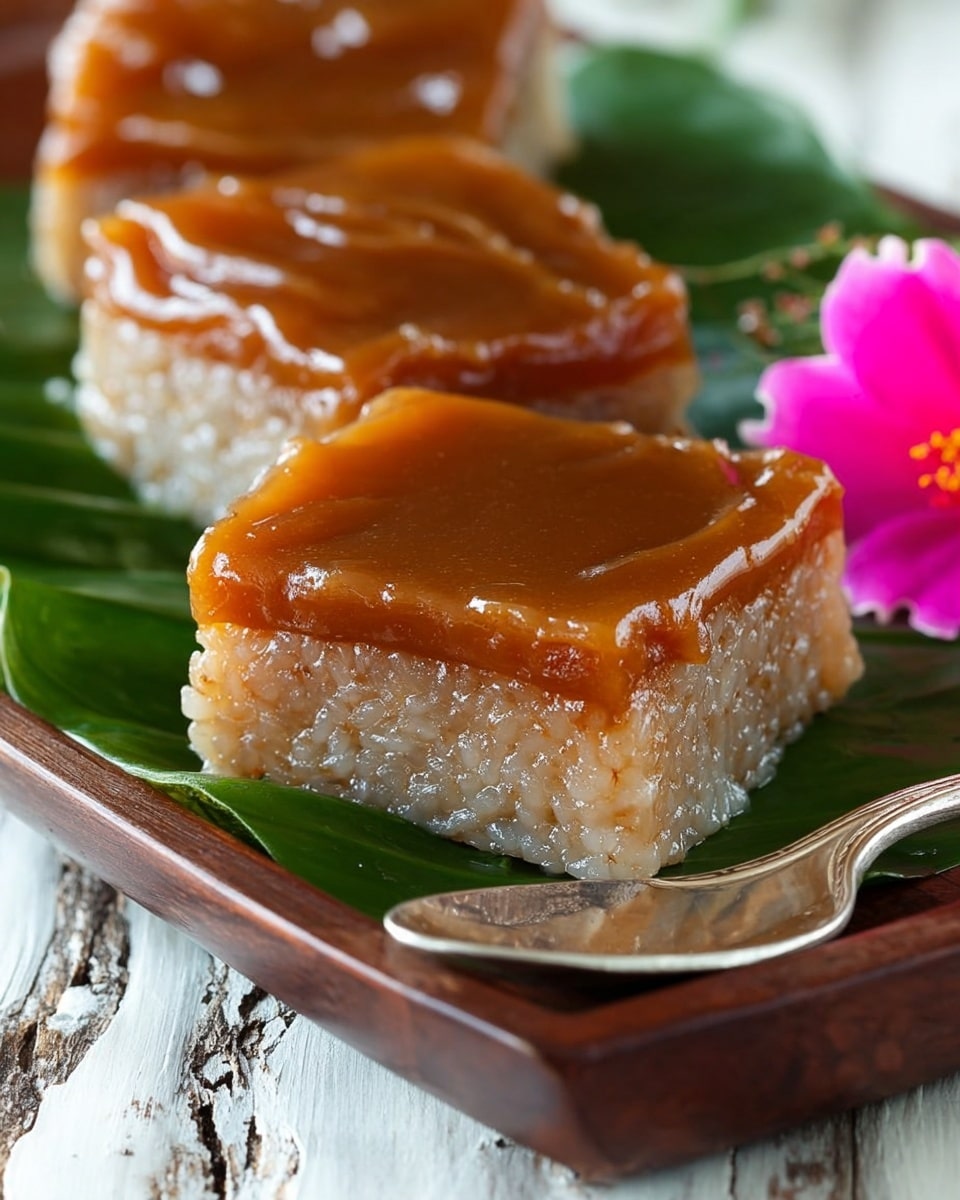
Garnishes
Want to jazz up your biko? Sprinkle toasted coconut flakes on top for added crunch and nutty flavor, or scatter a few crushed roasted peanuts for a contrast in texture. You could also add a drizzle of extra latik (coconut caramel curds) for a luscious finish that invites second helpings.
Side Dishes
Biko is delicious on its own but pairs perfectly with freshly brewed coffee or a warm cup of Filipino hot chocolate. If serving at a gathering, consider alongside fresh tropical fruits like ripe mango or banana to balance the sweetness with natural freshness.
Creative Ways to Present
For a fun twist, try serving mini biko portions in cupcake liners or small glass cups for individual servings. Layer with whipped cream or even a scoop of ube (purple yam) ice cream to add vibrant color and exciting flavor contrasts that surprise and delight.
Make Ahead and Storage
Storing Leftovers
Leftover biko keeps well covered in the refrigerator for up to 4 days. Store the rice cake tightly wrapped with plastic wrap or in an airtight container to maintain its moist texture and prevent it from drying out.
Freezing
If you want to enjoy biko at a later date, freezing is a great option. Wrap individual squares tightly in plastic wrap and place them in a freezer bag. When stored properly, frozen biko can last up to one month without losing its delicious flavor.
Reheating
To bring your biko back to life, thaw frozen pieces overnight in the fridge, then warm them gently in the microwave or steamed briefly until heated through. Reheating restores the cake’s soft, sticky goodness just like freshly made.
FAQs
Can I use regular rice instead of glutinous rice?
Regular rice won’t give you the sticky, chewy texture that biko is famous for. Glutinous rice is essential here to achieve the traditional consistency that makes this cake special.
Is pandan leaf necessary in the recipe?
While pandan leaves add a lovely fragrant aroma, you can skip them if unavailable. The biko will still be delicious, just missing that subtle herbal note.
Can I make this vegan?
This recipe is already vegan since it uses coconut milk instead of dairy, and all other ingredients are plant-based. Just ensure your brown sugar is vegan, as some brands use bone char in processing.
How sweet is the biko? Can I adjust the sugar?
The biko is moderately sweet, balanced by rich coconut milk flavors. Feel free to adjust the brown sugar according to your preference, but reduce too much sugar may alter the texture and caramelization.
What is the latik syrup mentioned in the recipe?
Latik in this context refers to a thickened coconut caramel syrup made by reducing coconut milk and brown sugar. It adds a glossy, flavorful glaze unique to Filipino sticky rice cakes like biko.
Final Thoughts
I truly hope you’ll give this Biko Recipe (Filipino Glutinous Rice Cake) Recipe a try and experience firsthand the wonderful blend of comforting textures and rich, sweet flavors it offers. Whether you’re introducing yourself to Filipino desserts or looking for a nostalgic treat, making biko at home brings warmth and joy that’s simply unforgettable.
Print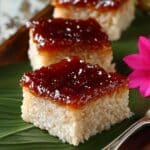
Biko Recipe (Filipino Glutinous Rice Cake) Recipe
- Prep Time: 5 minutes
- Cook Time: 60 minutes
- Total Time: 1 hour 5 minutes
- Yield: 9 squares
- Category: Dessert
- Method: Baking
- Cuisine: Filipino
Description
Biko is a traditional Filipino sticky rice cake made with glutinous rice, rich coconut milk, and caramelized brown sugar syrup called latik. This comforting dessert features a chewy texture from the rice and a sweet, luscious coconut topping, baked to perfection for a delightful treat enjoyed at celebrations and gatherings.
Ingredients
Rice Mixture
- 2 cups glutinous rice (washed and drained)
- 1 cup canned coconut milk
- 1 cup water
- 2 pieces pandan leaves
Latik Syrup and Topping
- 2 cups canned coconut milk
- 1 cup dark brown sugar, packed
- 1 teaspoon vanilla extract (optional)
- Vegetable or coconut oil (for greasing the pan)
Instructions
- Prepare the Pan: Generously grease an 8×8-inch square baking pan with vegetable or coconut oil and set aside to prevent sticking.
- Cook the Rice: In a large pot over medium heat, combine 1 cup coconut milk and 1 cup water. Add the washed glutinous rice and pandan leaves. Bring to a simmer, then reduce heat to low and cover. Cook until liquids are absorbed and rice is almost cooked but still slightly firm in the center. Add a bit more water if necessary to prevent burning.
- Make the Latik Syrup: While the rice cooks, combine 2 cups coconut milk and 1 cup dark brown sugar in a large pan. Add vanilla extract if desired. Cook over medium heat, stirring constantly, until the mixture thickens and darkens to a deep caramel color. Lower heat to very low to keep warm.
- Combine Rice and Syrup: Reserve 1/2 cup of the latik syrup for topping. Remove pandan leaves from rice. Add the cooked rice to the pan with the remaining latik syrup. Gently fold the mixture until the rice is evenly coated, cooking occasionally until the rice absorbs the syrup but remains slightly textured.
- Bake the Biko: Transfer the sticky rice mixture to the greased baking pan, spreading it out evenly. Pour the reserved latik syrup evenly over the top. Bake in a preheated oven at 350°F (180°C) for 20-30 minutes, or until the topping is bubbly and slightly caramelized.
- Cool and Serve: Remove from the oven and let cool to set. Cut into 9 squares and serve as a delicious Filipino rice cake dessert.
Notes
- Use pandan leaves if available for authentic aroma; they can be omitted if unavailable.
- Do not overcook the rice in the first step, as fully cooked rice will result in a mushy biko.
- Dark brown sugar gives a richer flavor and color, but light brown sugar can be substituted if necessary.
- Greasing the pan well helps prevent sticking and makes serving easier.
- Biko is best enjoyed at room temperature or slightly warm.


